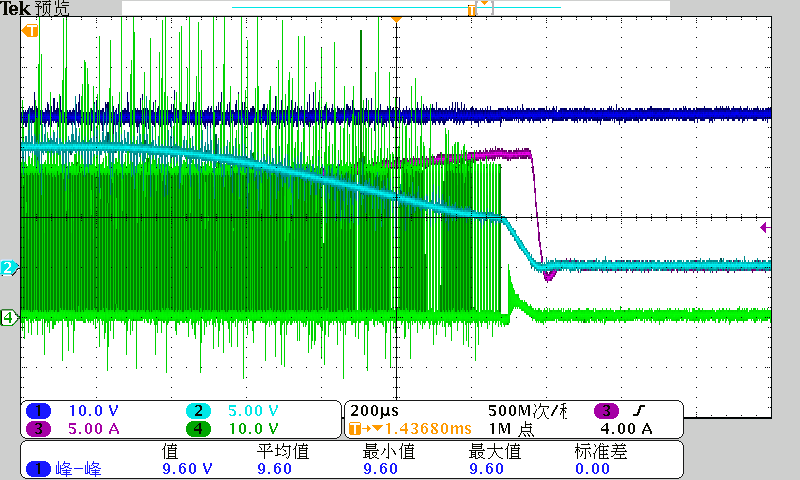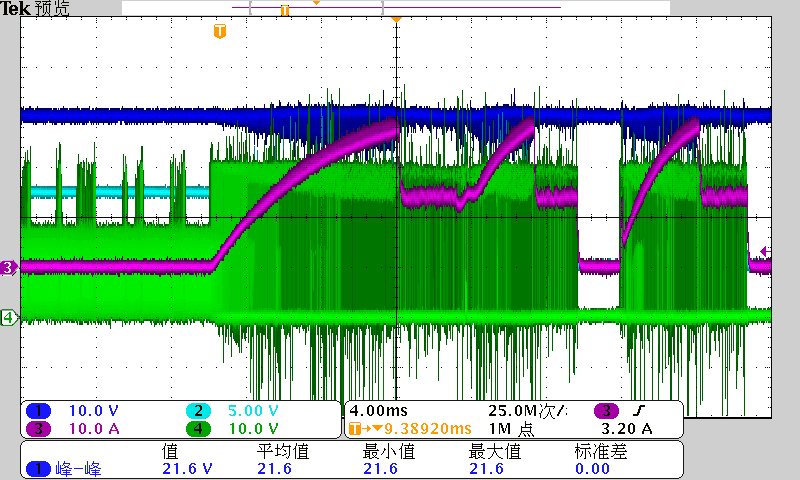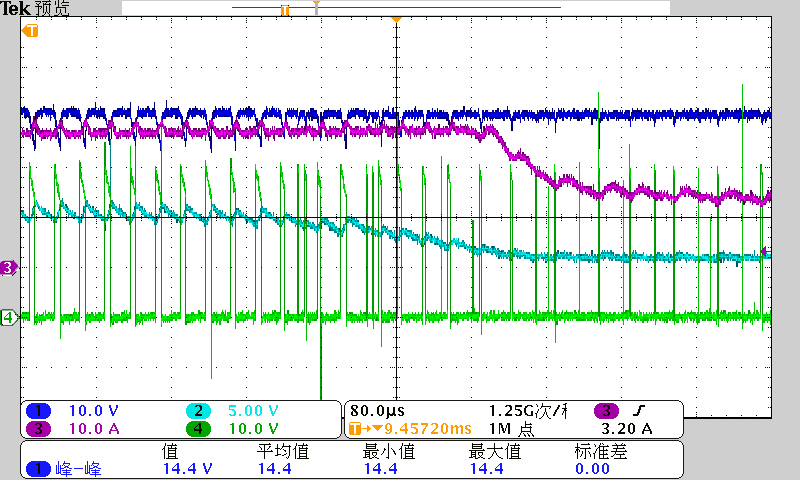Hi TI expert,
Find Over Current Protection Failure here.
Seems on issue board, switching not stopped, and have several acyclic pulse (just happen the position where the switching should get closed). Can you help analysis the possible cause?
CH1 Dark Blue: Input
CH2 Light Blue: Output
CH3 Pink: Output Current
CH4 Green: SW Point
Using EVAL LM5116-12:
30V IN, 12V OUT, 0.1R Load Transient Added
Issue Self-designed Board:
30V IN, 7.5V OUT, 0.1R Load Transient Added
B R,
Jayce Luo




